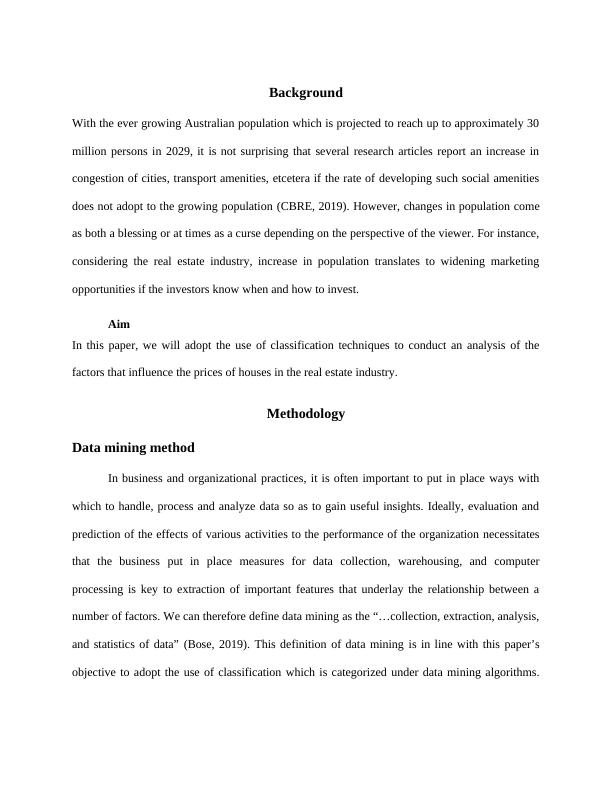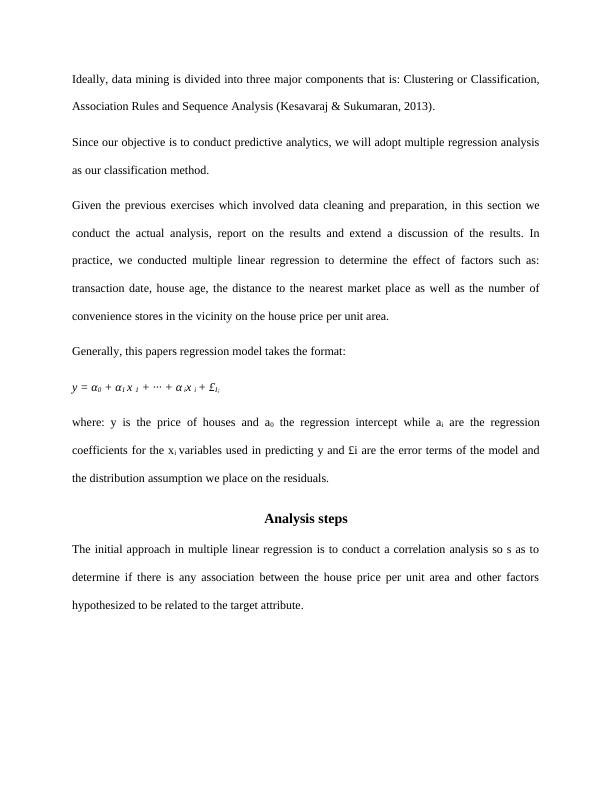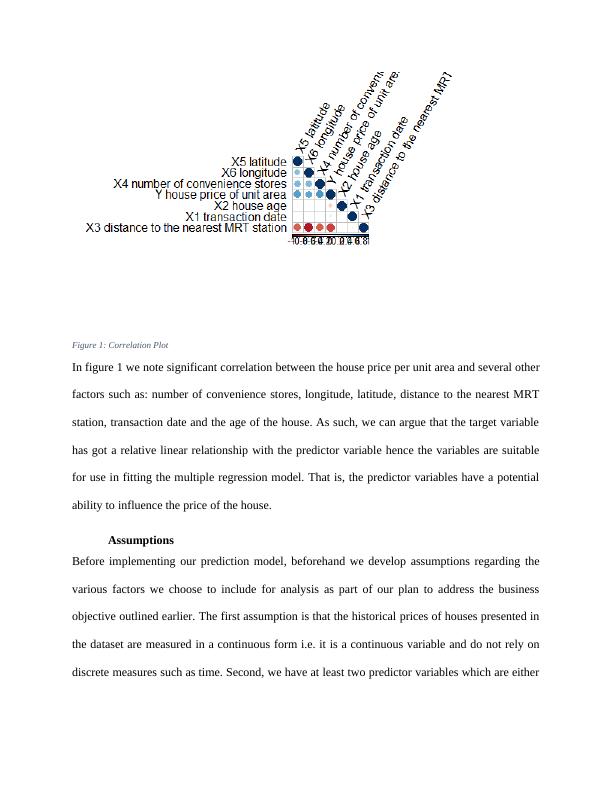Factors Influencing House Prices in the Real Estate Industry
This assignment focuses on the technical understanding of interpreting the given datasets into a reasonable business report using (self-selected) data mining tool.
8 Pages1506 Words240 Views
Added on 2023-03-31
About This Document
This paper analyzes the factors that influence house prices in the real estate industry using classification techniques. It discusses the methodology, analysis steps, assumptions, performance metrics, results, and evaluation. The paper provides advisory actions for short-term and long-term investments in houses.
Factors Influencing House Prices in the Real Estate Industry
This assignment focuses on the technical understanding of interpreting the given datasets into a reasonable business report using (self-selected) data mining tool.
Added on 2023-03-31
ShareRelated Documents
End of preview
Want to access all the pages? Upload your documents or become a member.
Significant Unsupervised Learning
|11
|2602
|313
Applicable Statistical Approaches for Data Mining
|3
|706
|34
Linear Regression Model for Predicting Housing Prices in the United States
|11
|1068
|434
Factors Affecting Real Estate Business in West of England
|18
|4523
|34
BEE1034 - Economics for Management
|11
|1996
|100
Business Analytics: Regression Analysis, Exponential Growth, Multiple Regression, and MS-Excel
|4
|744
|227



